Guide To Buying Resistance Bands
Resistance bands are workout accessories that make your weight training routine more challenging and can be useful for post-workout stretching and physiotherapy. They are versatile in utility, so you can either use them independently or with weights, depending on your preference and ability.
Product Comparison Table
What To Look for
31/03/2020
Buy a set of bands instead of a single band.



- It is best to buy a set of bands so you can increase the resistance levels as your strength increases.
- If you’re new to resistance training of any kind or are recovering from an injury, choose bands with lighter levels of resistance.
- On the other hand, if you’re healthy and have been training your muscles for a while, you can go for bands with higher resistance levels.
Flat bands vs. Tube bands
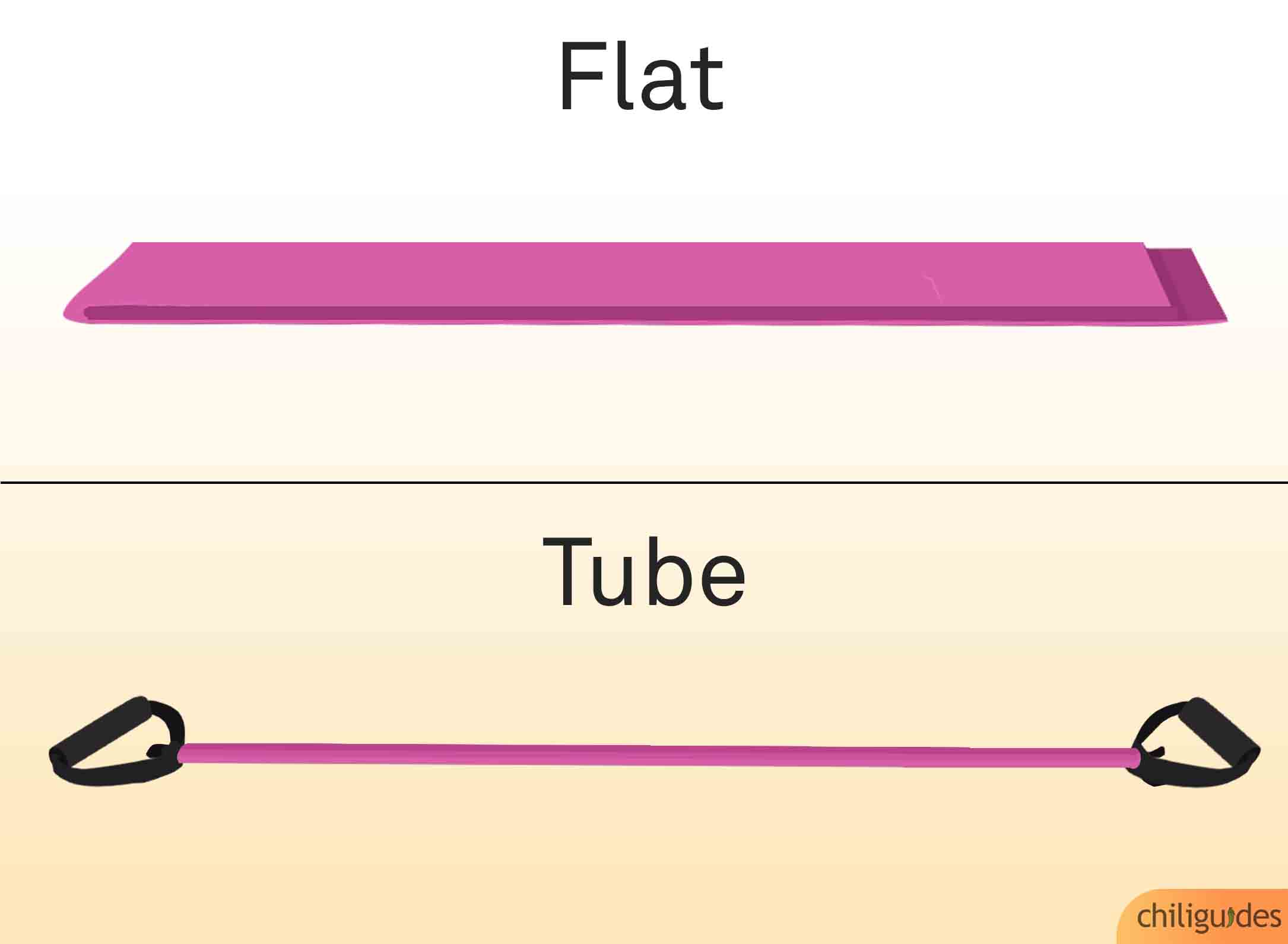


There are mainly two types of bands.
- Flat resistance bands are plain stretchy strips of rubber, suitable for anyone going through physiotherapy or rehabilitation. However, they are not as durable as you would want them to be.
- Tube resistance bands offer more resistance and durability than flat bands. They are appropriate for experienced individuals who require additional resistance to work or stretch their muscles.
Use the color of the bands to determine their resistance level.
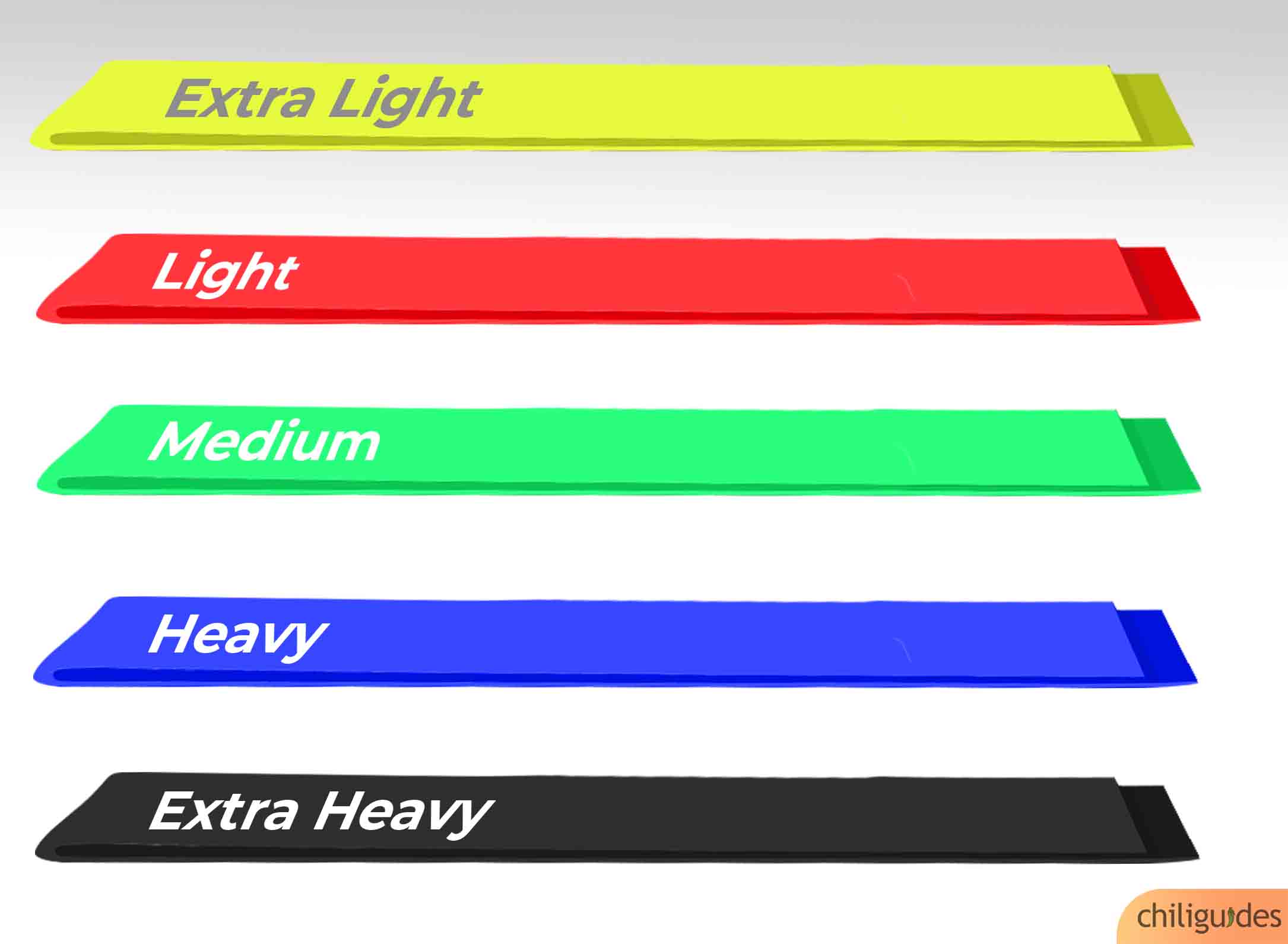


- Resistance levels are defined by colors, proceeding from light to dark. Although there is no set color scheme, they are usually categorized as:
Color Resistance
Yellow Extra light
Red Light
Green Medium
Blue Heavy
Black Extra Heavy
Top Picks
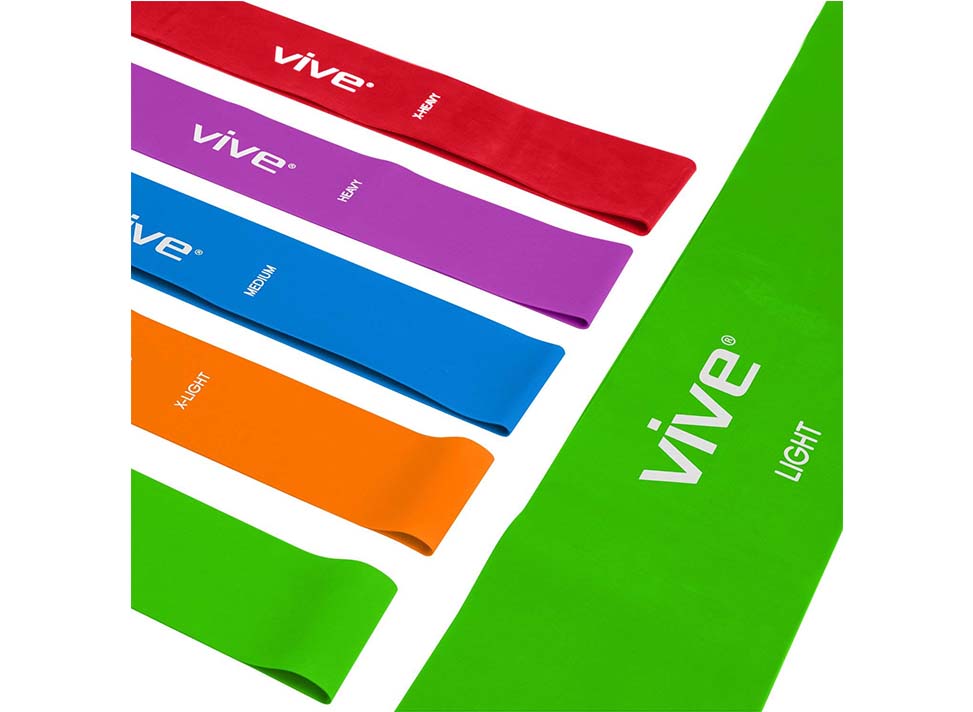


Best Flat Resistance Band Set
VIVE Resistance Loop Bands
For $16.99
- Wide width makes it ideal for physiotherapy
- Reasonably priced
- Does not lose elasticity
- Not suitable for people with latex allergies
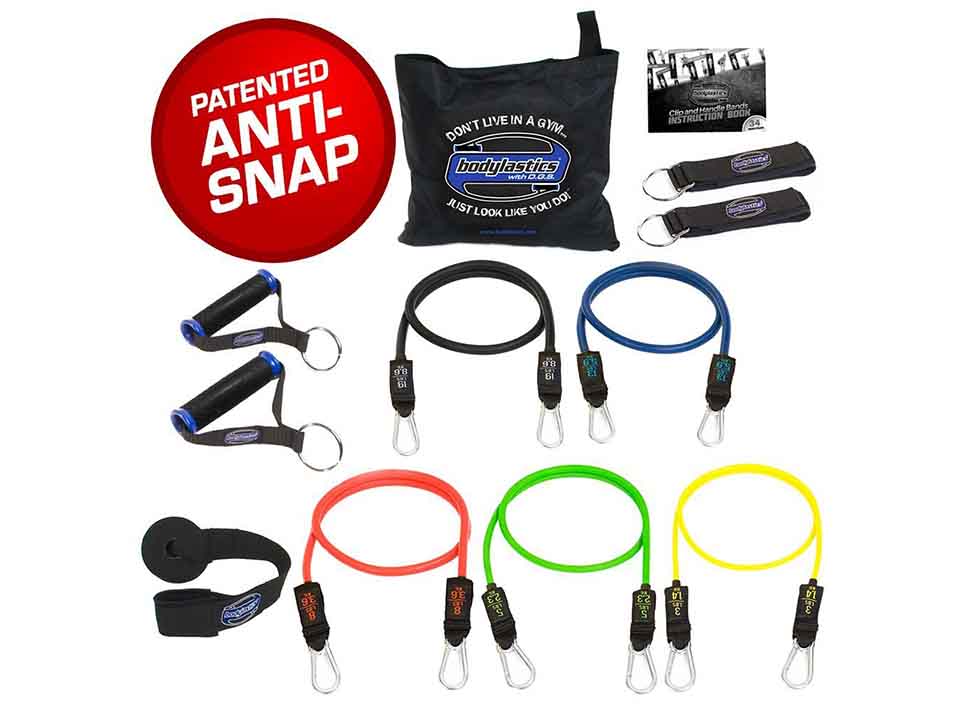


Best Tube Resistance Band Set
Bodylastics Stackable Tube Resistance Bands
For $49.95
- Durable build materials
- Anti-snap technology
- Satisfaction guarantee
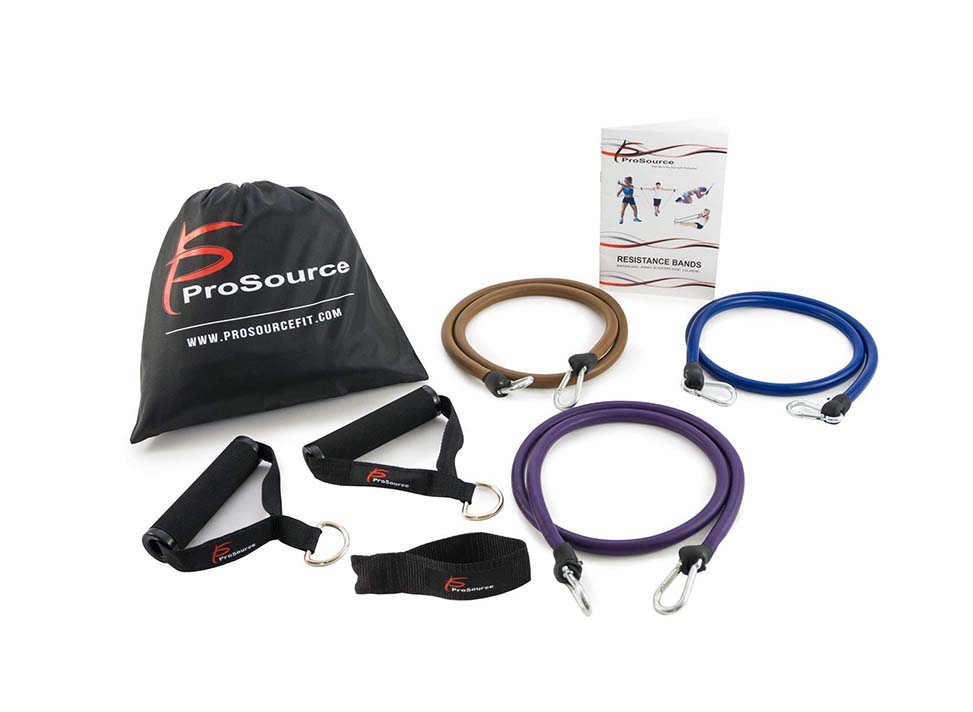


Best For Heavy Duty Workouts
ProSource XTREME Premium Heavy Duty
For $19.22
- Over 100 lbs of tension when used together
- All necessary accessories are included
- Extra wide handles for more gripping space
- Not suitable for beginners
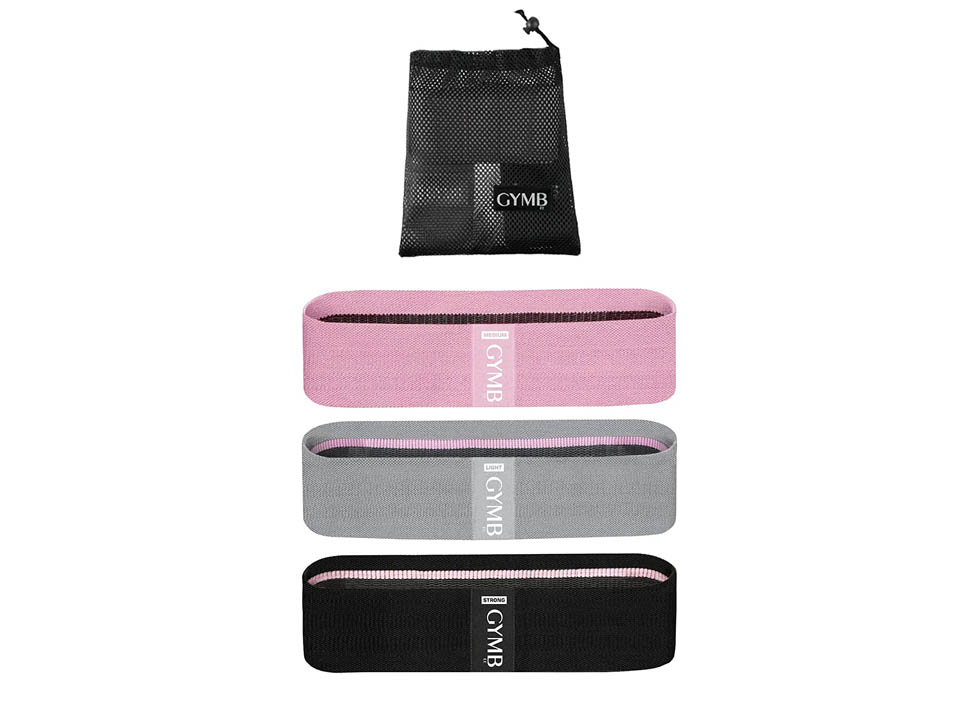


Best booty building resistance band set
Booty 3 Resistance Bands
For $15.29
- Closed Loop bands specifically for glute exercises
- Aggressive texturing on the inside to prevent the bands from slipping
- Extra wide for better grip and balance



Best inexpensive resistance band set
Allvodes Resistance Bands Set 12pcs, Workout Bands
For
- Great value for money
- Includes carry bag and other small accessories
- Lacks the elasticity of other options
Common Questions
Q:How does a resistance band work?
Resistance bands are made of strong elastic rubber that applies external resistance when you use them. By adding this extra resistance, these bands target your muscles. The best part about resistance bands is that the more you stretch them, the more they resist you. So, for example, if you use them in a bicep curl, the resistance will be maximum near the top, unlike a regular curl. This will put more stress on your biceps and work them more.
Q:What muscles do resistance bands target?
Resistance bands add extra resistance to your workouts, making them more challenging and forcing your muscles to expend more effort. These tools can be used to target almost every muscle in your body, from biceps, triceps, shoulders, and the rest of your upper body to your hamstrings, calves, and other muscles of your lower body. However, some exercises targeting a specific muscle may be too difficult using a resistance band. In that case, you’re better off doing regular exercise to avoid injury.
Q:What exercises can I use the resistance bands for?
Resistance bands are brilliantly versatile; you can use them for a plethora of exercises that target various parts of your body. Some exercises you can do are:
- Squats and leg extensions for your glutes, quads, and hamstrings.
- Bicep curls and concentration exercises for biceps.
- Overhead triceps extension and kickback for triceps.
- Seated rows, bent-over rows, and pull-downs for the back.
- Bench press, push-ups, and standing chest press for chest.
- Overhead press, forward raise, and lateral raise for shoulders.
- Kneeling crunch, reverse crunch, and Russian twists for your core.
Q:How do I use resistance bands for getting bigger arms?
You can perform several exercises using resistance bands to tone your arms, like:
Biceps curls: Just replace dumbbells with resistance bands and use the same form to perform curls.
Overhead stretch: Lift the resistance band overhead with one end in each hand and pull them apart by bringing your arms level with your shoulders.
Triceps extension: Anchor one end of the band on a bar or under your feet and pull the other end from behind your back by raising your hands as you would do in a normal extension.
Seated single arm row: Sit with legs extended, and loop one end of the resistance band around your toe. Pull the other end with a hand, as you would do in a single-arm row.
Q:How do I use resistance bands to build my abs?
Try these exercises to work your core and target your abs:
- Lying leg raise, mountain climber, and bicycle crunch: Do these exercises by tying the bands around your ankles.
- Standing knee raises: Loop the resistance band around the middle of your feet. Lift your knee above your chest and twist your torso so that your opposite elbow almost touches the raised knee. Repeat by alternating the sides.
- Side plank: Loop the resistance band around your ankles and do a side plank.
Q:Can I use resistance bands for strength training?
Yes, one of the primary uses of resistance bands is to build core strength. You can regulate the amount of resistance you are comfortable with by altering the length of the bands. More resistance encountered by your muscles translates to more amount of work that they need to do. Regular use of resistance bands improves your muscle strength and tests the limits of your muscles.
Q:How do I anchor resistance bands?
Many resistance bands come with anchors that you can attach to your doors. If you don’t have an anchor, you can loop the resistance bands around sturdy structures like pillars, heavy workout equipment, and furniture. For several exercises, you can anchor the bands around yourself as well.
Q:How do I clean the resistance bands?
To clean your resistance bands, dip them in a bucket of warm water and add a few drops of very mild detergent. Just swish them around in the water and gently scrub them off.
Do not use cleaning solutions, as the material may get damaged. Do not leave them out in the sunlight to dry, as that would damage the material.
Q:The resistance bands I use keep rolling off. How do I stop that?
Resistance bands might roll off because they’re not the correct size for you. Get those bands that are of appropriate length and width. When you use them, they should neither be too tight nor too loose.
Also, make sure that you wear them at the same place on both legs. Mismatched or incorrect positions can also cause them to slip or roll off.
Q:How do I regulate the resistance of the bands?
You can alter the resistance of the bands in the following ways:
- Move closer to the anchor point to reduce resistance and move farther to increase resistance.
- Loop the resistance band around a bar or your foot to reduce the length and increase resistance.
- You could add one more band to your workout to increase the resistance.
- Interlock two bands at their midpoint to increase the length.
Online Sources:
- http://wikihow.com
- http://bestresistancebands.net
- http://top.me
- http://thewirecutter.com
- https://www.livestrong.com/article/498685-how-to-determine-what-size-resistance-bands-to-buy/
- https://www.rubberbanditz.com/info-center/band-right/
- https://www.fitsimplify.com/resistance-band-buyers-guide/
- https://www.resistancebandspro.com/resistance-band-buying-guide/

